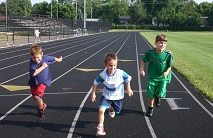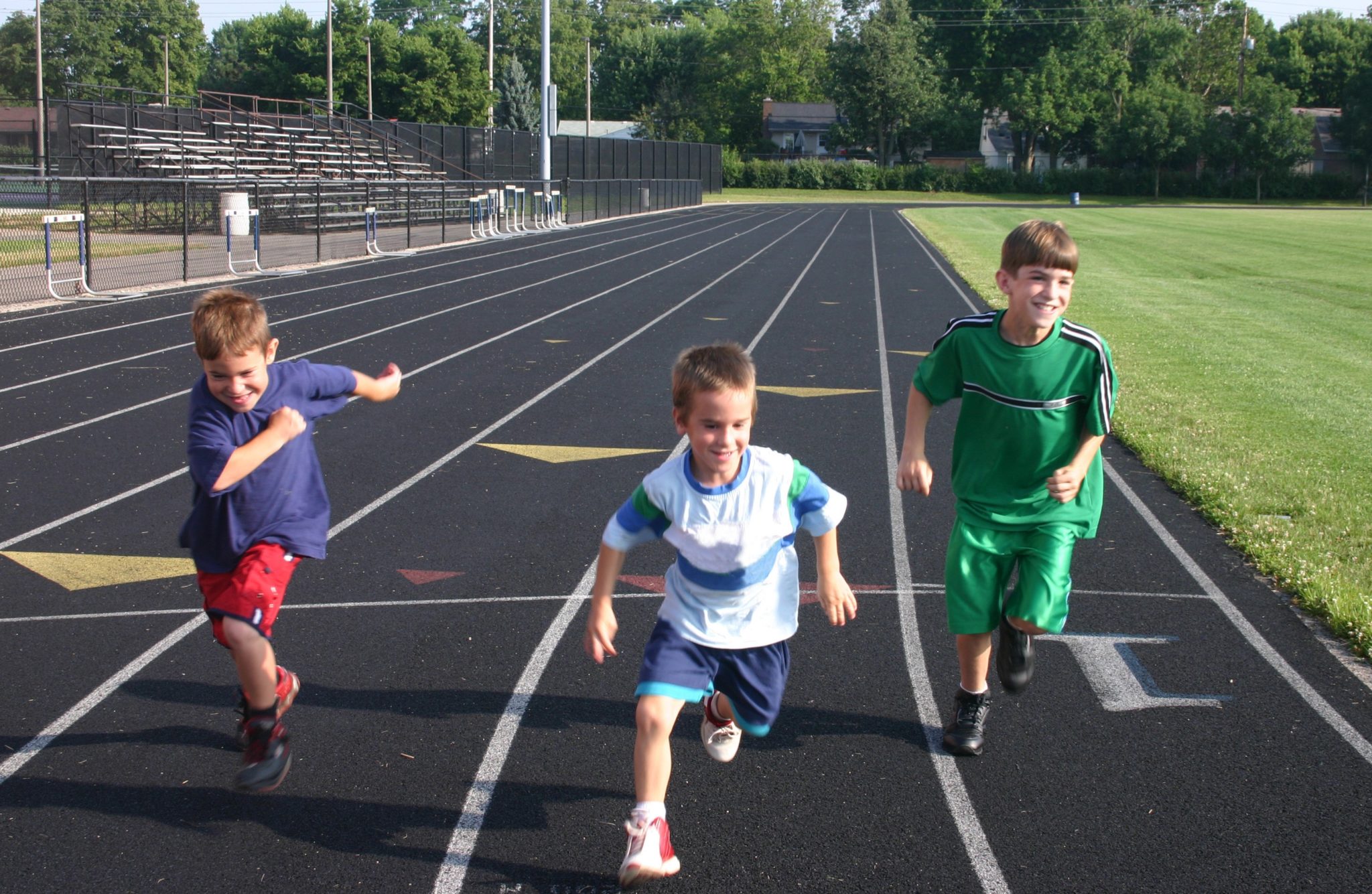Fundamentals of Youth Running

Kids are masters of surprise. Just when you think they are ready for a nap, they are bouncing off the walls ready for a new activity. As a partner of the Healthy Weight Commitment foundation, we understand that running is an excellent way for your little firecrackers to burn off excess energy, and it is also an excellent skill to have for a lifetime of health and activity. The Road Runners Club of America promotes the following guidelines for youth running. These guidelines are based on the 10 developmental principles that guide training and racing for young distance runners outlined in the book Training for Young Distance Runners written by Larry Greene, PhD and Russ Pate, PhD, published by Human Kinetics.
Make Running Fun
First and foremost, running should be fun. Do not use running as a punishment. Encourage children to participate and try their best.
Emphasize good technique
Teach youth good form early and help eliminate bad habits such as excessive arm movement, twisting of the upper body, or over striding.
Focus on participation and self-improvement
In grade school, running should be about participation and developing a healthy lifestyle, not about being the fastest kid in the school or program. Save competition for middle and high school aged students.
Consider individual differences
Avoid a one size fits all running program.
Accommodate for differences in abilities within the group. Children mature both physically and emotionally at different rates, and this will factor into their ability to participate in running.
Limit excessive training and competition before puberty
Before puberty children are rapidly growing and changing. Excessive training may interfere with normal growth and cause injury in a child. Between the ages of 3 and 9, encourage regular exercise, which can include organized running for fun as outlined in this program guide. Around the age of 8–12, children may enjoy participation in organized running programs that has a more systematic training environment that lasts 2–3 months. Around the age of 12 for girls and 14 for boys, key developmental changes will enable students to slowly increase training distance and duration leading to participation in a systematic and competitive training environment.
Increase running workload gradually
Running workload includes volume (distance), intensity (speed or effort), and frequency (number of days a week). Just like with adult, running training, children should start a running program with a low volume, low intensity, and limit frequency to a couple days a week. Workload should increase over the duration of the program, but should remain appropriate for the individual.
Participate in age appropriate running events
Running in a kid’s fun run or youth track event can be a great experience for kids. For children 5 and under focus on “dash” events that range from a few yards to one mile. For children 5 and over, kids fun runs that are a ½ to 2 miles long may be considered, but allow for a combination of running and walking. Children ages 6 and over may want to participate in a 5K run/walk. Be sure to allow for walking in a 5K and let them go at their own pace. Children ages 13 to 15 and older may want to participate in a 10K to half marathon event. Children 18 and older may want to participate in a marathon or further distance. These are general guidelines and the distance a child can physically and emotionally tolerate will depend on the individual, however longer distances (10K and over) should wait until after puberty.
Founded in 1958, the Road Runners Club of America is the oldest and largest national association of running clubs, running events and runners dedicated to promoting running as a competitive sport and as healthy exercise. The mission of the RRCA is to promote the sport of running through the development and growth of running clubs and running events throughout the country. The RRCA supports the common interests of runners of all abilities during all stages of life by providing education and leadership opportunities along with programs and services that benefit all runners. Learn more at www.RRCA.org and at www.RunPro.com.
If you’re interested in reading about more ways to keep your family healthy and active, check out these other Together Counts articles.

